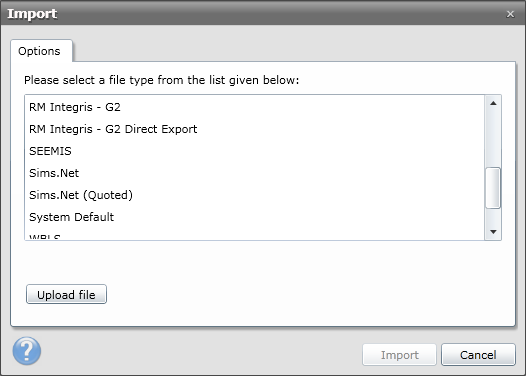Student Import

This page describes the most common issues that occur when importing a CSV file into the Library System. To view more details about a problem, click on the issue heading.
This is caused by either the Management ID or Borrower Forename/Surname fields not matching up with the imported CSV file.
Management ID
There are usually 3 reasons why the Management ID does not match up. Each are described below.
1. CSV has been opened in Excel
Opening the file in Excel for editing applies formatting to fields within a CSV file by default. Some of the fields, such as Management System ID, have any leading zeroes stripped off. When your Management system is SIMS, it nearly always contains leading zeroes in this field, such as "004365". When opened in Excel, this number becomes "4365". On the surface this may not look like a problem but as the Management ID is the primary field for matching existing borrowers, it means that it is easy to cause duplicates. To demonstrate this, consider the following scenario:
- A borrower exists with number 001234.
- A CSV file is imported, containing the number 1234.
- No existing Borrowers have the number 1234.
- The pupil is thought to be new and stored in the Intake table
If this issue matches what you are experiencing, MLS recommend re-creating the CSV file and if you need to modify it, use a text editor such as Notepad instead of Excel.
2. Incorrect Management ID Field
Exporting an incorrect Management ID can be the cause of the borrowers not matching. To check this, follow the instructions below.
- Open the file with Notepad and take a note of an existing pupil's Management ID on one of the rows. Note that the name of this header may vary depending on the system it has been exported from. For example, it may show under ADNO, ManagementSystemID or Roll No.
- Check the corresponding record in the Borrowers table, within the library system
- If the two match exactly then it is not the issue. If they are completely different (for example, one contains letters) then a different field has probably been exported. In these circumstances, the file will need re-creating from the Management system and must include the correct field.
3. Changed Management Systems
It could be that since last time an import was run, the Management system has been changed. In the event of this happening MLS can assist you by removing the Management ID for all existing Borrowers, meaning that the system will fall back to matching on Forename/Surname. Please contact MLS support for further assistance.
Forenames/Surnames not Matching
If there is no Management ID against the existing Borrowers in the library system, the system will fall back to matching the pupils based on their forename/surname. However, if these fields do not match then the system will not be able to match up the records in the CSV with those in the library system.
To ensure that the surname and forenames match exactly, check some of the records in the CSV (using Notepad to open it) against some of the records in the library Management. You may find that they do not match due to spelling mistakes or because the preferred or legal forename/surname is used. If this is the case then you will need to re-create the file ensuring that they will match then re-import the CSV again. If there are only one or two borrowers then it may be preferred to match them manually.
This error occurs when not all of the required headers are present on the first line of the CSV. Certain mapping options require differently labelled headers so make sure that at minimum, the mandatory fields are specified with the correct spelling. If you click the Details button on the error message, the system often tells you the fields that are missing. Double check that the file has been created in accordance with the documentation regarding your MIS. To view the documentation, click here.
In addition, this message is experienced when the wrong 'mapping' option (a picture of the available mapping options is below) has been selected from the import window, particularly if there are many fields that show when clicking details on the message. If this is the case, ensure that the correct import option was chosen when the file is imported.

This issue normally has two causes. The first is due to a comma mistakenly being inserted in the wrong place. The second is because the column's headers have been labelled wrongly.
Additional Comma(s)
If this happens, it can cause the data to become displaced, shifting the data across to the wrong field. Take the following CSV as an example.
"ManagementSystemID","Forename","Surname","DateOfBirth","Gender","TutorGroup","YearGroup"
"00056789993888","Joe","Bloggs","05/05/1985",,"Male","10Green","10"
Notice the additional commas between the date of birth and gender. This causes the data to offset, which means that the gender of Male gets import into the TutorGroup field.
One way to identify this is to use the find function with the CSV open in notepad. Open the CSV in Notepad and press CTRL + F on the keyboard. In the find box, type ,, and click Find Next. This should highlight any commas that show twice. Of course in some cases such as when the field is empty, this may be correct so you may have to check each occurrence for the problematic one.
Incorrect Column Header
If the columns are not labelled against their respective fields correctly then it is easy to import data into the wrong field. Consider the following CSV as an example.
"ManagementSystemID","Forename","Surname","DateOfBirth","Gender","TutorGroup","YearGroup"
"00056789993888","Bloggs","Joe","05/05/1985","Male","10Green","10"
Notice that the Surname ("Bloggs") is currently set to import into the Forename and vice versa. This is easy to correct, simply open the file with Notepad and alter the field headers.
This error occurs when attempting to import a CSV file from the Borrowers or Resources table. When you are impoting a CSV file to update your pupils you must import the data into the Intake table.
Follow the instructions explaining how to import a CSV file for information on how to do this.
This message occurs when the CSV file has been imported in to the Borrowers table (you should import the csv into the Intake table) or when no CSV file has been uploaded from the Import window.
Follow the instructions explaining how to import a CSV file for information on how to import your csv.
If this page has helped you resolve the issue and the CSV file is now imported correctly, click Continue to move onto the next phase. If you are still having problems, click Help.
Continue Help
